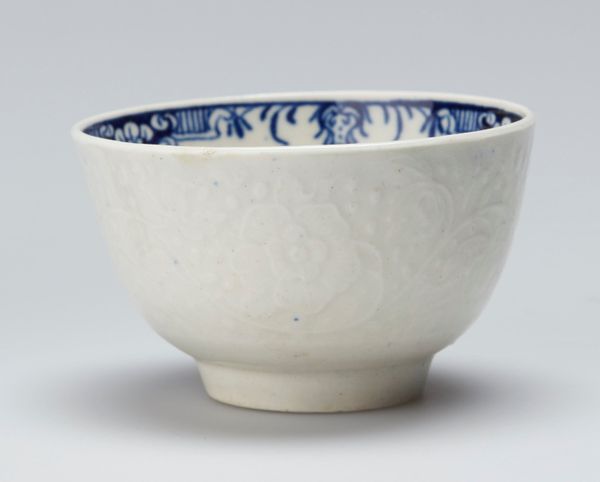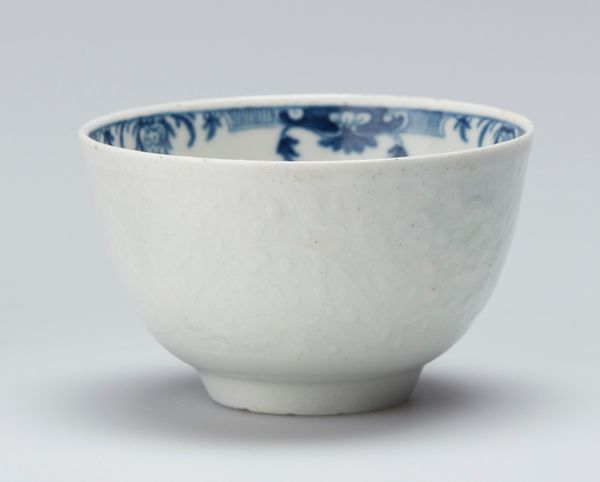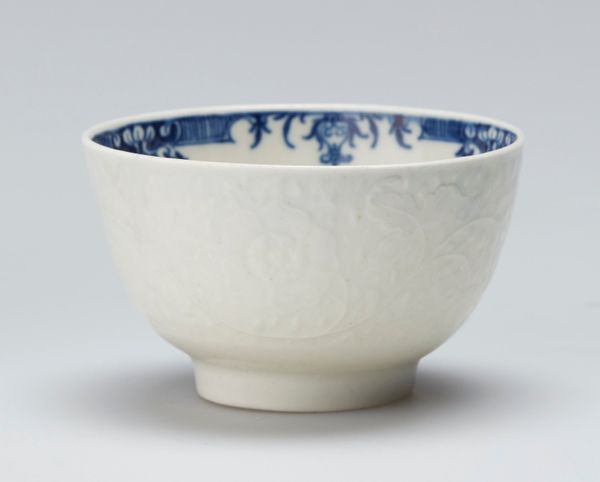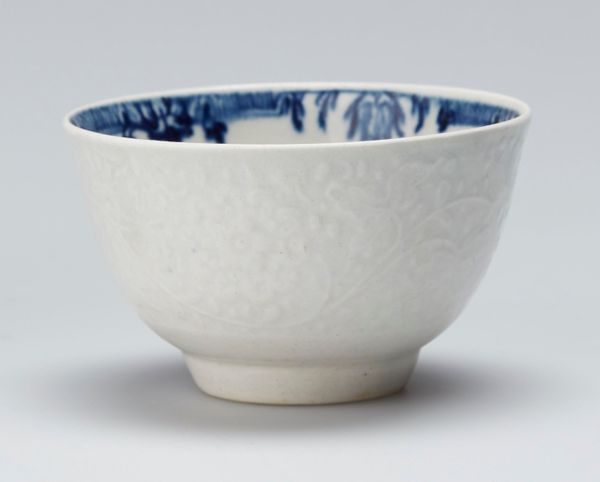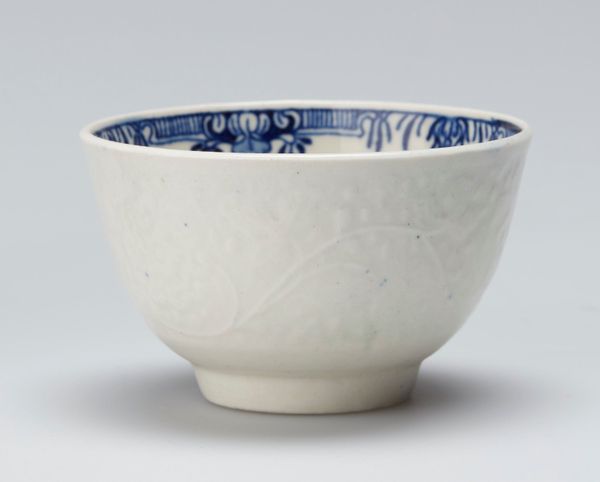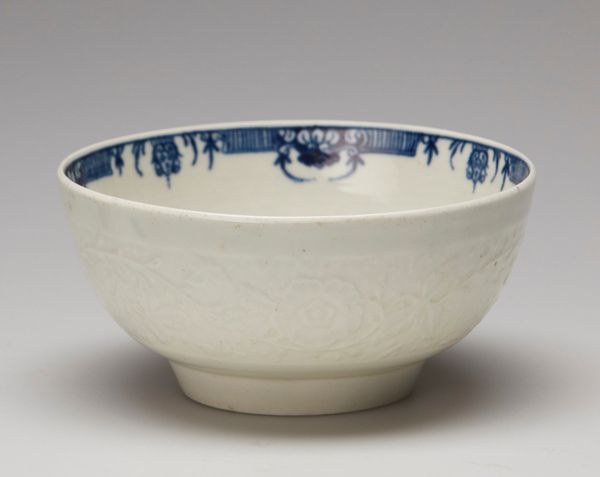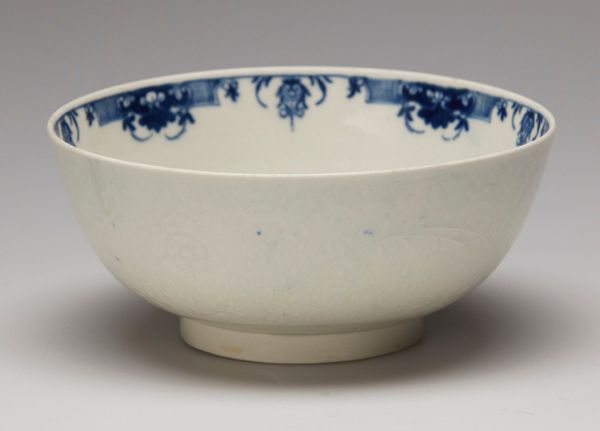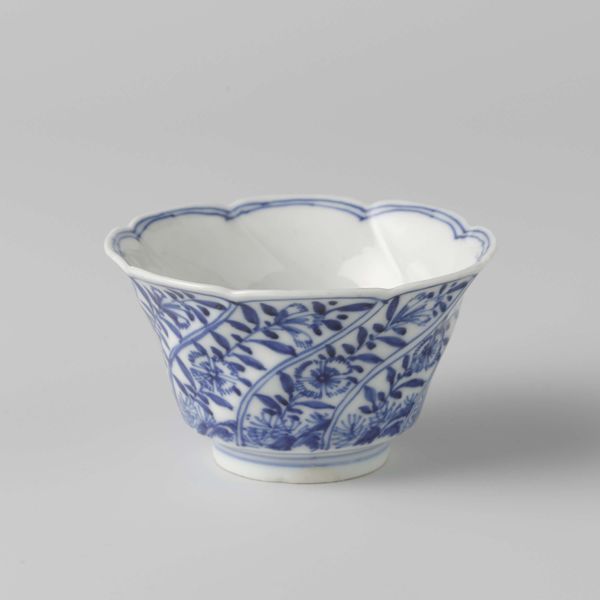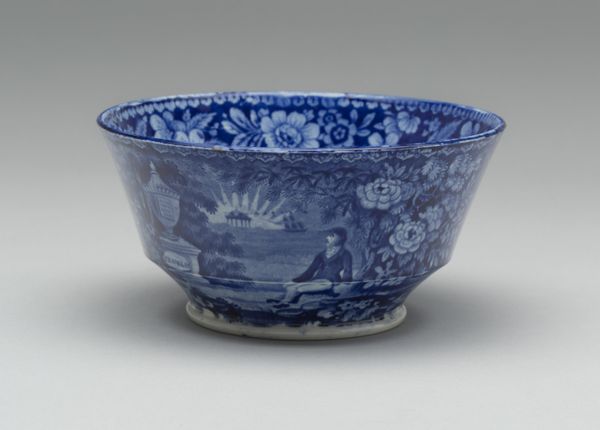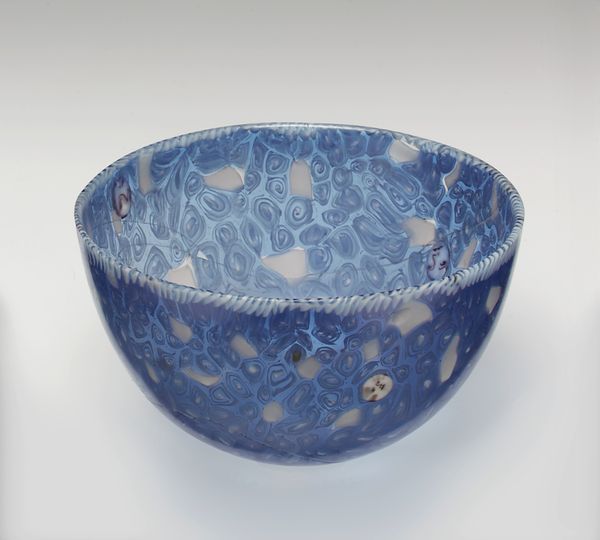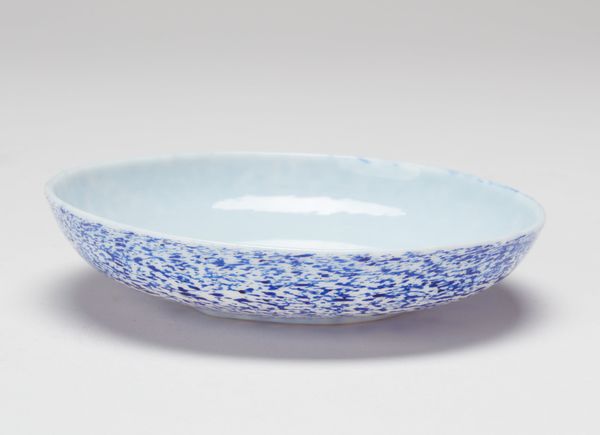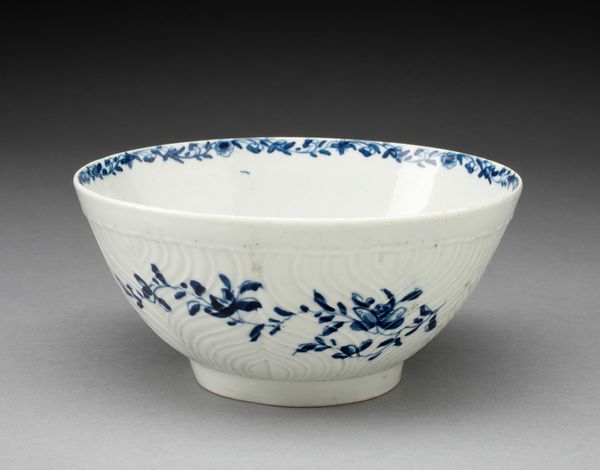
Tea cup c. 18th century
0:00
0:00
ceramic, porcelain
#
asian-art
#
ceramic
#
porcelain
#
ceramic
#
decorative-art
Copyright: Public Domain
Curator: Here we have a porcelain tea cup, dating from the 18th century. It was created by the Worcester Porcelain Works, also known as the Royal Worcester Porcelain Company, and now resides here at the Minneapolis Institute of Art. Editor: My first thought is serenity. The cup has such clean lines, that pristine white…and then, boom, a surprise burst of blue inside. It feels both calming and quietly decadent. Curator: Decadent is a good word for it. Tea, in the 18th century, was increasingly fashionable but also expensive. This cup is an object reflecting the social rituals around tea and how they became intertwined with status. Notice how fine the porcelain is; only certain consumers would have had access to items like this. Editor: And look at the decoration. There's an embossed floral design almost ghosting across the outside surface and that deep blue pattern ringing the inside – it's a secret garden only revealed with each sip. Was this cup meant for everyday use, or special occasions, do you think? Curator: Pieces like this could have seen a fair bit of use. Tea drinking was becoming more formalized and frequent, certainly among middle- and upper-class folks. But objects like this were still precious, meant to last through generations as markers of a family’s success. We often don't consider the symbolic meaning of cups or the performative ritual they demand. It is also tempting to explore how the East was essential for the establishment of the material in the West. Editor: That brings up an interesting tension. It's both intimate – held in your hand, raised to your lips – and yet it's also broadcasting something to the world. "I drink tea," it declares. "And I can afford a fancy cup to drink it from.” It’s not *just* a tea cup, it’s social commentary. Curator: Exactly! Porcelain itself carried significance. In the West, there was a fascination with the technology behind these ceramic objects produced in China, so owning them also carried the cultural capital of connecting with new ideas and knowledge. So it’s tied into so many strands. Editor: I’ll never look at a teacup the same way again. All this in something I could hold in the palm of my hand. Curator: And that, in essence, is why we continue to look at the artifacts that remain, isn't it? They continue to whisper untold stories, even now.
Comments
No comments
Be the first to comment and join the conversation on the ultimate creative platform.

